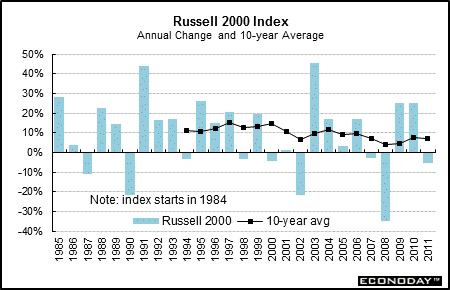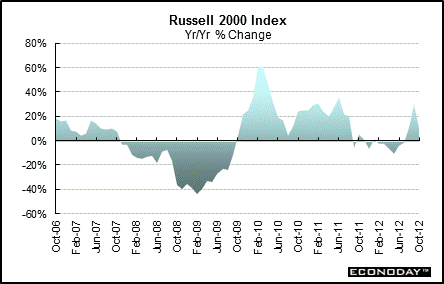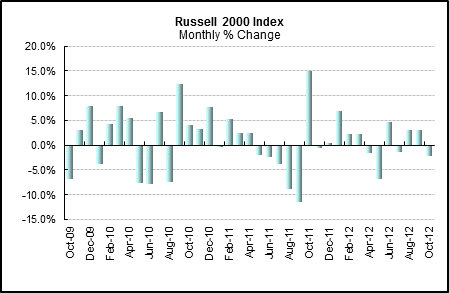

The Russell 2000 dipped 5.5 percent in 2011 after robust increases in each of the prior two years of just over 25 percent. The Russell 2000 is a benchmark index for the small capitalization sector. It has a longer history than the S&P Small Cap Index and also has a wider base (2000 stocks versus 600 for the S&P).

Small cap stocks seem to get hit more dramatically than large cap stocks in times of uncertainty but they also tend to rebound more sharply in economic recovery. This index gets revised each year in July when stocks no longer fitting the “small-cap” criterion are removed from the index.
The Small Caps index in the second half of 2007 and into very early 2009 was hit hard by subprime losses, the liquidity crunch, and recession – even though the Fed rate cuts did provide some support. More favorable economic news boosted the index from spring 2009 and into early 2010. However, sovereign debt concerns weighed on the index from mid-2010 through 2011. Earnings and a stronger recovery lifted stocks early in 2011 until at mid-year a sluggish economy and European sovereign debt weighed on equities.
In early 2012, perceived progress on European debt, favorable corporate earnings, and mostly positive economic data boosted small caps. But at mid-year, European worries were off and on and the economy was slowing. On a year-ago basis, the Russell 2000 in October stood at 10.5 percent, compared to 30.5 percent the month before.

The Russell 2000 declined 2.2 percent in October after increasing 3.1 percent the month before.


About the Stock Market • The Dow Jones Family • The S&P Family • Other Key Market Indices
|